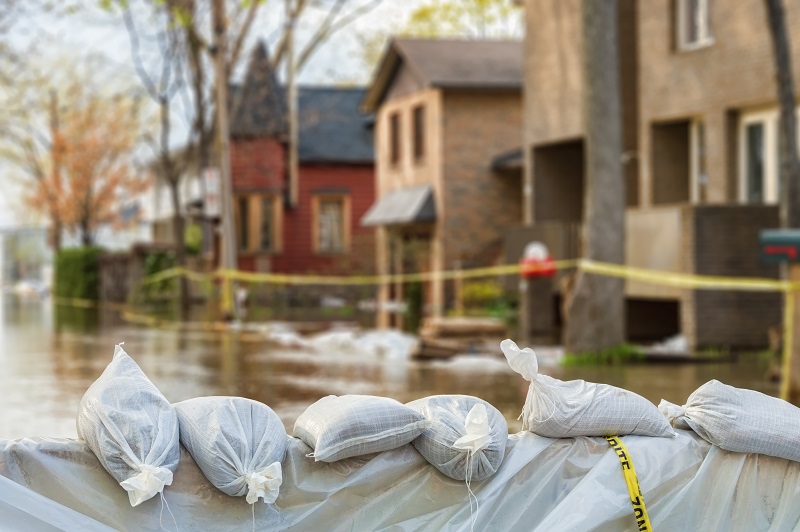Get Water Out
As water pours down, it can be hard to know when exactly your home is at risk of flooding. By using a water sensor, flood detection system, or installing a sump pump, you can stay alert and prepared for severe weather.
Use a Water Sensor
You can install a water sensor anywhere in your home that may be prone to flooding. Whether it is placed near appliances like your washing machine, dishwasher, or toilet, a water sensor will tell you immediately if water is accumulating. You can also use a water sensor in your basement, an area especially prone to flooding. By using water sensors strategically in your home, your flood detection system will help you act quickly whether you are at home or not.
Water Removal with a Sump Pump
A sump pump can be extremely helpful for quick water removal. Typically, people install sump pumps in their basements, as water likes to accumulate in the lowest point of a home. In the case of a power outage, which can happen when there is flooding or a storm, it’s worth having a backup battery for your sump pump.
Hold the Water Back
If the water level near your home is rising fast, or expected to rise quickly, you can take preventative measures to protect your home. By using flood skirts, barriers, or sand bags, you can keep water from penetrating the foundation of your home.
Use Flood Skirts
Flood skirts can be an excellent way to keep water away from your home. By placing them a safe distance away from your home, you can create a barrier between you and a flood. In extreme situations, using a flood skirt can mean the difference between staying dry and dealing with a soggy house.
Pile Up Sandbags
Sometimes a last ditch effort and other times a strategic plan, placing sandbags around your home can keep water out. Fortunately, sand bags are easy to acquire and store at your home for when you need them.
Stay Above the Flood Level
The higher the water level, the higher you’ll want to be. At its extreme, this can mean lifting the whole house by means of stilts or piers or choosing a higher elevation for your home. However, if you’re already settled into your home, there are some other ways to ensure you stay above flood level.
Raise Electrical Outlets and Switches
Electricity and water don’t mix well. Ensure your electrical utilities stay high and dry by raising the electrical outlets and switches in your home.
Lift Internal and External Appliances
You can make sure that your important appliances stay dry in the case of flooding by lifting them up. An affordable way to do this is by using concrete blocks.
Additional Steps If Flooding Starts
If water is coming into your home, you can still take actions to mitigate water damage.
- Shut off electricity at the breaker panel
- If possible, open windows to let air flow through
- Use a shop vac or sump pump to remove as much water as possible
- Take photos and videos to document the event
Still, it’s unlikely you have the tools or the training to remediate your home from severe water damage. For immediate water removal services, we are here to help. We come certified, prepared, and ready to completely restore your home or business. Call on ProKleen day or night and we will be on the way.

